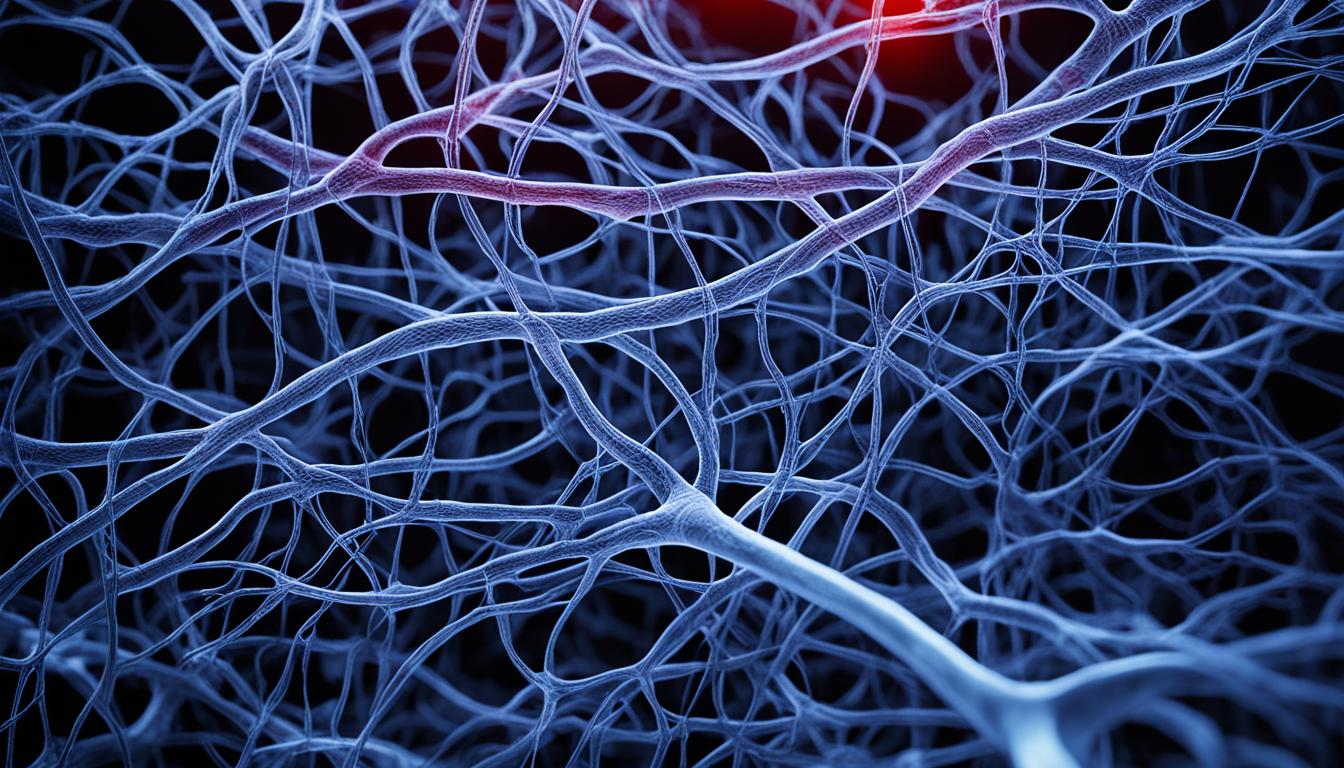A cerebral aneurysm is a serious health issue. It causes a blood vessel in the brain to bulge. This bulging happens when the walls of the artery get weak. As a result, the artery can bulge and even burst. Most often, these aneurysms occur in the major brain arteries at the skull’s base.
Knowing the signs and reasons behind a cerebral aneurysm is crucial. Detecting it early and getting treated can make a big difference. If not treated, aneurysms can cause very serious problems. These include stroke, brain damage, coma, and death.
Usually, cerebral aneurysms aren’t found until they break open. But sometimes, they can be seen when checking for other health issues. That’s why keeping up with your health check-ups and screenings is important.
There are several ways to treat a cerebral aneurysm. Doctors might use microvascular clipping, endovascular coiling, or other methods. These options are designed to keep the aneurysm from bursting and to control it.
Key Takeaways:
- Cerebral aneurysm is a bulging or ballooning in a blood vessel in the brain.
- It can lead to serious health problems, including hemorrhagic stroke and even death.
- Early detection and treatment are crucial for better outcomes.
- Treatment options include microvascular clipping, endovascular coiling, flow diversion stents, and the WEB device.
- Regular health check-ups and preventive screenings are important for early detection.
Types of Cerebral Aneurysms
Cerebral aneurysms come in various types, each with its unique look and cause. Knowing these types is key to treating them right. The saccular, berry, fusiform, and mycotic aneurysms are the main four types.
Saccular Aneurysm (Berry Aneurysm)
A saccular aneurysm is the most seen kind. It looks like a berry hanging from a brain artery. These aneurysms show up at major artery splits in the brain.
Fusiform Aneurysm
Fusiform aneurysms make the artery bulge all over, giving it a spindle shape. They are not like saccular aneurysms. They might be found anywhere in the brain, but are usually at the bottom.
Mycotic Aneurysm
Mycotic aneurysms happen from infections that make the artery wall weak. They can be anywhere in the brain, especially at the bottom. Mycotic aneurysms are not as common, but they are more dangerous when they burst.
Each cerebral aneurysm type needs different care. Knowing which type helps choose the right treatment. After looking at the types, we’ll talk about symptoms, causes, and risks in the next part.
Symptoms, Causes, and Risk Factors of Cerebral Aneurysm
Cerebral aneurysms usually don’t show symptoms until they burst. However, if an aneurysm gets big enough, it might push on brain nerves. This can cause pain, numbness, weakness, or vision changes.
If you notice any of these signs, it’s vital to get help fast.
Common symptoms of cerebral aneurysm include:
- Persistent headache
- Sudden and severe headache (referred to as a “thunderclap” headache)
- Nausea and vomiting
- Stiff neck
- Sensitivity to light
- Seizures
- Loss of consciousness
- Confusion or disorientation
- Difficulty speaking or understanding speech
- Weakness or paralysis on one side of the body
The exact cause of cerebral aneurysms isn’t clear, yet a few things raise the risk. These risks and causes include:
- Age: Most aneurysms happen in folks over 40.
- Gender: Women more often get cerebral aneurysms than men.
- Smoking: Smoking ups the chance of aneurysm formation and rupture.
- High blood pressure: This condition stresses blood vessel walls, making aneurysms more likely.
- Drug use: Cocaine and other drugs can weaken blood vessel walls, upping the risk.
- Alcohol use: Heavy drinking also plays a part in aneurysm development.
- Inherited connective tissue disorders: Issues like Ehlers-Danlos and Marfan syndrome can make blood vessels weaker, boosting aneurysm risk.
- Polycystic kidney disease: This condition is linked to a higher chance of aneurysms.
- Family history: Having a relative with a cerebral aneurysm raises your risk.
Even though some things can make an aneurysm more likely, they can still happen even if you don’t have these risks. If you’re worried or think you might be at risk, talking to a doctor is a good idea.
Treatment and Prevention of Cerebral Aneurysm
The way to treat a cerebral aneurysm depends on if it has burst or not. If it has, surgery is needed right away to stop the bleeding. This prevents any serious problems from happening.
If the aneurysm hasn’t burst, other options are available. Treatments like microvascular clipping and endovascular coiling are used. They help keep the aneurysm from breaking and causing more harm. Sometimes, doctors choose to wait and see for small aneurysms.
To prevent cerebral aneurysms, live healthily and watch out for risks. Stopping smoking, drugs, and heavy drinking is important for staying safe. Keeping your blood pressure in check is key too. High blood pressure makes you more likely to have an aneurysm burst.
Avoiding these risks, exercising often, and eating well all help. They improve your overall health and might lower your chances of getting an aneurysm. Be sure to regularly check known aneurysms for any changes. This way, you can get help early if needed.

